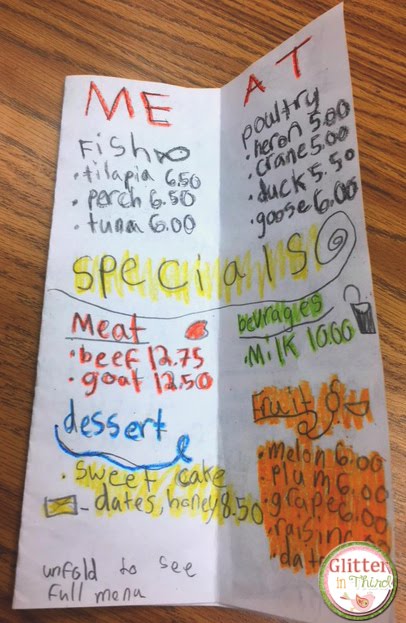Join the VIP Teacher Club!
Students will conduct self-guided research and work while finding a creative solution to a real-life problem, then present it in an articulate manner to their peers while they eagerly await kind yet meaningful & constructive feedback. Sound too good to be true? Until I got the hang of PBLs, I would answer “YES!” a million times.
As I utilized PBLs more and more in the classroom, I started seeing shortcuts and tips that would make a PBL fit better into a day, and allow students to truly focus on the task at hand. Students would often get lost in the process, and focus on the incorrect topic. I struggled to find the balance of self-direction and scaffolding. My first PBL of the year is generally, well, not so great. It’s my students first time having so much self-directed independence and work. However, it doesn’t have to be like this! If you’re prepared and mentally ready for a PBL with a few quick tips, it will make your PBL run smooth and efficiently!
PBLs start with a hook and a driving question. This is a way to “hook” students and get them excited about the educational journey that they are about to begin. There is also a driving question that students will be grappling with until their final end goal. For my Ancient Egyptian PBL, the question is “How can you, as an Ancient museum curator, convince people to visit your museum?”. This question is constantly looked at during the PBL to help students stay on track. Students complete a series of tasks that lead up to the final cumulative project of creating a commercial to convince potential guests to visit the museum that they created.
Are you familiar with PBLs? PBL stands for project-based learning. Many teachers are apprehensive to start a PBL in their classroom. PBLs are fantastic for gifted students. Instead of simply teaching students about a specific subject, it allows students to develop 21st-century skills to solve a real-life problem or develop a career oriented strategy. In this PBL, students work to research and make real-life decisions while designing an Ancient Egyptian museum. When done well, they are a true cornerstone of a constructivist classroom.
Here are four tips to utilize time most efficiently in the classroom when doing project-based learning!
I used to give my students the driving question and tell them to start making magic! (Un)shockingly, this was a disaster. My students are in third-grade, giving them the world to work with but expecting them to be detailed and stay on topic was setting them up for failure.
I created my PBL resources so that everything is small and chunked up. Teachers guide students in small pieces to ultimately create their solution to a real-life problem. Instead of giving students directions to “create a museum and then a commercial,” I broke everything up. For example, on Monday they work on researching a good location along the Nile for their Museum. On Tuesday, they focus on hieroglyphics to design their museum name. Next, they research Ancient Egyptian gods and goddesses to hire as a tour guide. Putting everything into small tasks is less overwhelming for kids, and allows students to focus on the learning and task at hand.

For example, during my literacy stations I incorporate parts of my Ancient Egypt PBL. One of the tasks involves students reading a passage about Ancient Egyptian food choices. Students then use the learned knowledge to create a menu for a restaurant at the museum. Another reading passage explains how mummification worked, students then break the passage into easy sequencing steps that a tour guide could easily explain to guests. One of the tasks involve calculating a daily and yearly total for the upkeep of the museum. All of these steps go into their final cumulative project of creating a commercial to convince potential guests to visit the museum.
Take advantage of all the subjects that you have in a day! Cross-curricular learning is engaging and educational for your kiddos.
I create a list of websites ahead of time and put them on a class PortaPortal. It also works well to ask your librarian ahead of time to grab a bunch of books on whatever topic that you’re using. I used to send my third-graders to the library or tell them to surf the Internet for databases, but ultimately I found this was time wasted. If your kids are slow typers or not familiar with the Internet, this can take way too long. Until your students are fluent in research, make it easier for them to focus on the task at hand by getting the initial research part prepared for them. It won’t take long for you to do, however it will make your PBL time infinitely more efficient and less stressful.
Practice makes perfect! Set up the expectations ahead of time, and at the beginning of each class period that you will be working on the PBL.
At the beginning of EVERY SINGLE ALLOTED TIME, we go over the driving question. It is so easy for kids to get lost and not see the forest through the trees. Continuously remind them what the end goal is. I write my question on a piece of chart paper and keep it posted around the room for students to glance at. I cannot emphasize how darn important that this piece is! It is also great if administration or a visitor pops in your room, they can easily see what your students are independently and collaboratively working on.
I offer several PBLs that center around the ancient civilizations of Ancient Egypt, Ancient Greece, Ancient China, and Ancient Rome. Feel free to check them out if you’re interested in doing a PBL with your classroom!

Hey there, I’m Kelly! I I love helping teachers save time with technology and resources so they have more hours in the day to spend with family and friends. Take a look around to find new ideas that you can implement in your classroom today!
COPYRIGHT © 2024 · Terms and Conditions